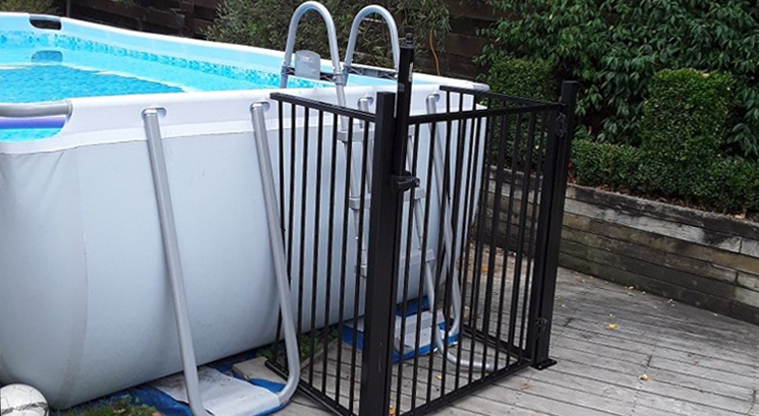In the past year, Auckland Council has carried out safety inspections of just over 13,000 registered pools in Auckland, of which around 25 per cent failed the first inspection.
Faulty gates that do not self-close and latch was the most common reason for failure, while another was climbable objects such as planters and outdoor furniture being too near the pool fence.
The council’s Swimming Pools Compliance Team Leader, Stuart Airs, is urging pool owners to keep kids' safety front of mind as we head into summer and ensure pool safety barriers are up to standard.
"Unsupervised access to pools through faulty gates and barriers is one of the leading causes of drowning in preschoolers. While the council conducts safety checks of all registered pools every three years, pool owners need to stay vigilant and make sure pool access points are secure.”
Mr Airs says portable pools left full of water and without appropriate barriers in place also pose a high risk for home drowning incidents.
"Portable pools are a popular family Christmas gift, and some on the market now are almost as large as traditional in-ground pools. Unfortunately, many people set them up without the proper barriers in place, and we have seen tragedies occurring at this time of year as a result.”
By law, any pool that holds more than 400mm (40cm) of water, including portable pools, paddling pools and spas, must have an appropriate barrier or fence to stop young children entering the pool on their own. Above-ground pools at least 1.2metres high may not need a fence, but the entry point must be restricted.

Example of portable pool with appropriate barrier in place.
Auckland Council carries out proactive checks of unregistered and potentially unsafe pools around the region, as well as three-yearly checks of the 31,000 pools registered with the council. These checks can help to prevent drownings, but safety is ultimately the responsibility of the pool owner.
“Nobody wants to lose a loved one to a home drowning accident. By being proactive with regular maintenance checks of gates and latches, ensuring young children cannot access pools on their own and always keeping eyes on children around water, you can help to keep your whānau from ever being in this position,” says Mr Airs.
To see if your pool is safe, you can find our full inspection checklist and safety videos online.
Top tips for staying safe around pools this summer:
- Stay close to children when playing around water.
- Eyes on! Don’t get distracted.
- Never prop pool gates open.
- Check your gate latches are working.
- Empty small portable pools when not in use.
- Never leave ladders propped against portable pools and spas.
For more information on pool safety visit the Auckland Council website.
Pool barrier safety checklist
Pool barriers:
- must restrict access to the pool and the immediate pool area
- must be at least 1.2m in height above the ground and any permanent projection (for example, steps, retaining walls, raised gardens, etc) or object placed on the ground outside and within 1.2m of the barrier
- must have no climbable features on the outside of the barrier (or adjoining barrier) that could be used for climbing unless they are spaced at least 900mm apart
- must not have any gaps that exceed 100mm in or under it, including pet doors.
Trellis or mesh fencing around the pool:
- higher than 1.8m must have openings 50mm or less, or be fitted with a protective cover
- with height between 1.2m - 1.8m must have openings 10mm or less, or be fitted with a protective cover.
Ensure there are no trees that could assist young children climbing the fence.
External removable ladders must be disabled or removed after use. For pools installed after 1 January 2017, ladders are not allowed unless they are surrounded by a complying barrier and gate.
Pool gates
Gates into the pool area must:
- open away from the pool area
- self-close and self-latch unaided from any distance
- comply with the rules for fences
The gate latch must be:
- a minimum of 1.5m above the ground and any objects within 1.2m of the barrier, if accessible from the outside of the barrier
- If the latch is accessible only by reaching over the gate, it must be set at least 150mm from the top or be shielded
- To pass an inspection, gate latches need to be a minimum of 1.5m above the ground and any objects within 1.2m of the barrier, if accessible from the outside of the barrier.
- inaccessible from the outside except by reaching at least 1.2m if mounted on the inside of the gate
- for pools installed from 1 January 2017, if the latch is accessible only by reaching over the gate, it must be set at least 150mm from the top or be shielded.
- If the latch is accessible only by reaching over the gate, it must be set at least 150mm from the top or be shielded.


